- Domov
- Do's & don'ts at a glance for a perfect lawn
Do's & don'ts at a glance for a perfect lawn
15/04/2021 - 10:49
Show me your lawn and I'll tell you who you are. For many people, their lawn is their business card. As a landscaper or gardener, it is your job to make this wish come true. But we all know: a well-manicured and striped, green lawn is hard work. Not only during installation, but also afterwards. With these tips, you can keep your customers happy, even when your job is done. Good luck!
To measure is to know
Golden rule: Before you start, collect as much information about the soil as possible. What is the soil's texture, what structure does it have and what is its acidity? To have a clear picture of the composition of your soil, have a soil analysis carried out.
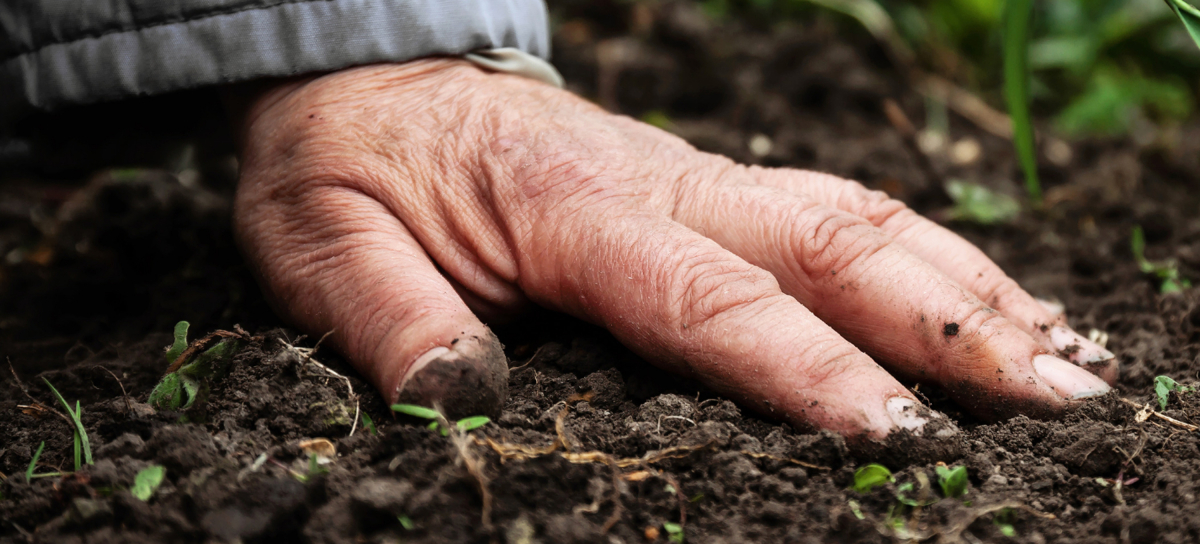
- Texture: Clay, loam or sand?
The soil analysis immediately clarifies the texture of your soil.
Would you like to check for yourself whether you are dealing with a clay, loam or sandy soil? Take some soil in your hands. Does it keep its shape when you squeeze or poke it? Then you are holding clay soil. Loam soil also holds its shape quite well but crumbles when you poke it. Sandy soil is less dimensionally stable and falls apart when you open your hand.
In principle, one soil isn’t “better" than another, but their specific characteristics mean that they require a different approach. Clay soil, for example, is by nature a very fertile soil. It retains nutrients and moisture. Disadvantage: it does not let much water and air through. Which a sandy soil does. The downside here is that this soil holds less moisture and nutrition. And yet you can maintain a sandy soil better. Indeed, with the right soil conditioner. It will compensate for the above-mentioned disadvantages.
Discover TerraCottem Turf for your lawn here.
- Organic material
The soil analysis also examines the proportion of organic material in the soil. That material - think of green compost or peat - is often added to improve the structure of your soil. It is about the way the particles of your soil are connected to each other. Be careful: the amount of organic material should not be too high because that will impair the water permeability of the soil.
- pH-value
Grass prefers a slightly acidic pH of 5.5 to 6.5. Why is the right level of acidity so important? Because it regulates the nutrient uptake. If the pH is too high or too low, the nutrients are less easily absorbed by the grass roots.
The acidity level is also reflected in the soil analysis.
Want to know more about the pH value? Read this blog.
In short, it's all about balance. When your soil retains enough nutrients, drains well and has a good balance between the amount of water and air, then you have a fertile soil for a successful lawn.
| TIP: Inform your customers about the composition of their soil. |
|---|
| Make them aware about the type of soil they have in their garden and give them advice. Explain, for example, that with clay soil it is important to prick or spike the soil twice a year and to avoid walking on it after a downpour. On the other hand, with a sandy soil it is crucial to irrigate more when it dries out. You can read more about this in the section on maintenance. |
Sowing grass or laying turf?
You now know the composition of the soil. Second question: how are you going to create your lawn? Will you sow the lawn or lay turf? The answer depends on the customer's wishes. Does he want quick results, or does he prefer to let nature take its course? Does he have a green thumb or not?
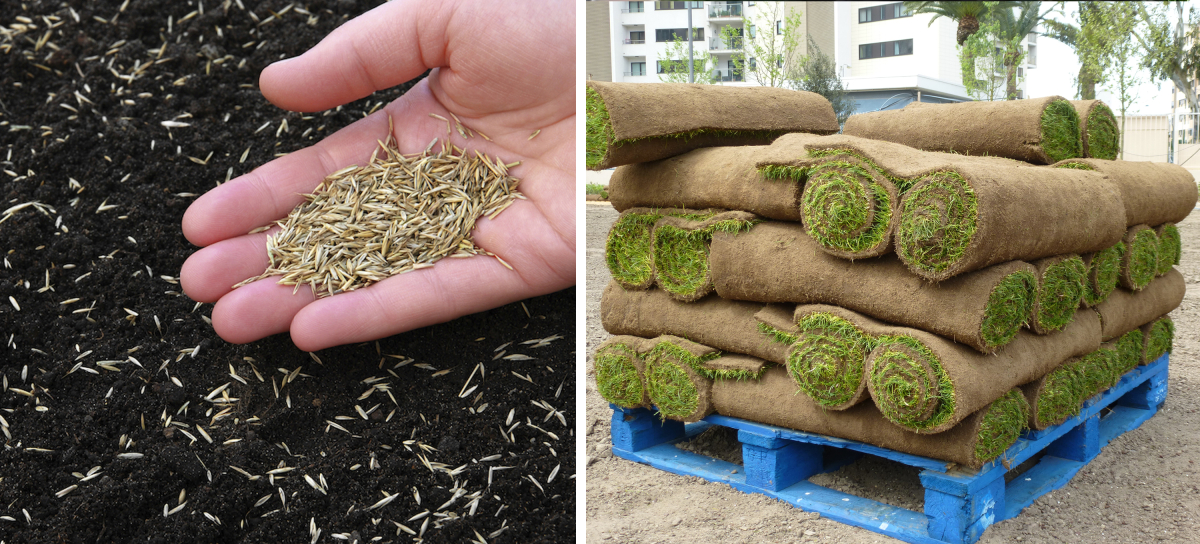
We compare the advantages and disadvantages:
- Sowing grass
| Advantages | Disadvantages |
| Cheaper. | Takes longer to see results. |
| Easy and quick to install. You do not need much insider knowledge. The only thing you need to pay attention to is that the soil is well prepared and that you sow to the right depth, ideally about 0.5 to 1 cm. | More aftercare. In the first weeks after the grass has been sown, you spend more time on maintenance than with turf. Just think about the weeding and watering. Mowing also requires more precision work. |
| Supplementary seeding of the bare patches. Birds love grass seed and will sometimes pick one up. Also, in case of heavy rainfall, seeds can be washed away, which means you have to sow those spots again. | |
| Limited sowing period. The ideal time for sowing is April/May or September/October, because that’s when you have an ideal soil temperature and hopefully less evaporation. |
| Tip: Invest in quality seed. |
|---|
| Why? Because good quality seed has a higher germination rate, better viability and cleanliness. And that means: less sowing to obtain a good amount of grass coverage. With cheap seed you have to sow more for the same result. After all, these seeds are not as well washed as quality seeds and therefore contain more weeds, with all the adverse consequences that entails. Also pay attention to the best-before date. For a good germination, the seed should not be older than 18 to 24 months. After this date, germination decreases by about 10% each year. Another point of attention: always store seed in a dry place. In short, it really pays to choose and store your seed carefully. Because with a good germination you lay the blueprint of your lawn for the years to come. |
- Turf or sods
| Advantages | Disadvantages |
| Quick result. Your customer can immediately enjoy a beautifully laid out lawn. | Higher cost. |
| Less aftercare after installation. Although, here too, it is important that you water the turf daily until it has rooted, this can be up to 28 days (with cold season grasses). | Labour-intensive. Laying out turf is physically demanding. Turf rolls weigh a lot and laying them requires precision work. |
| Can be installed (almost) any time. But beware: it should not be too cold or too hot, or too dry. The ideal time to lay the turf is actually during a period when you know there will be a lot of precipitation. |
| TIP: Whichever system you choose, make sure there is firm contact between the seed or the mat and the substrate. |
|---|
| If you lay turf, you must press it down well or use a roller. When sowing, you must press the seeds until they are about 0.5 to 1 cm deep in the soil. |
What kind of grass?
Nowadays, there is a whole range of grass varieties. It all depends on how your client uses his/her lawn. Intensive use, with children running around? Best to use playing grass. If the grass is intended for decoration, then ornamental grass is the best option. The location will also influence your choice. If the garden is in the shade, then shade tolerant grass will do the job for you. If your customer is a 'lazy' gardener, you can recommend slow-grow grass. Colour, too, is often a decisive factor.
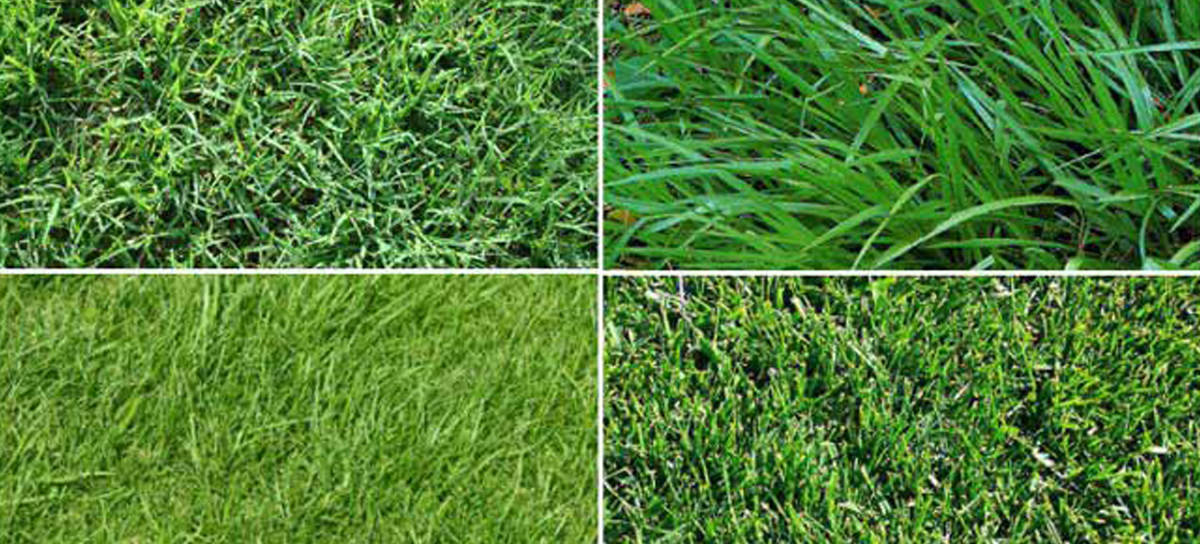
Maintenance: How do you keep grass greener on your side of the fence?
Whatever grass you choose, it takes time and dedication. People often replace flowerbeds with lawn because they think it requires less work. That is far from true. It’s best to let your clients know. With these maintenance tips, you can prevent disappointment.
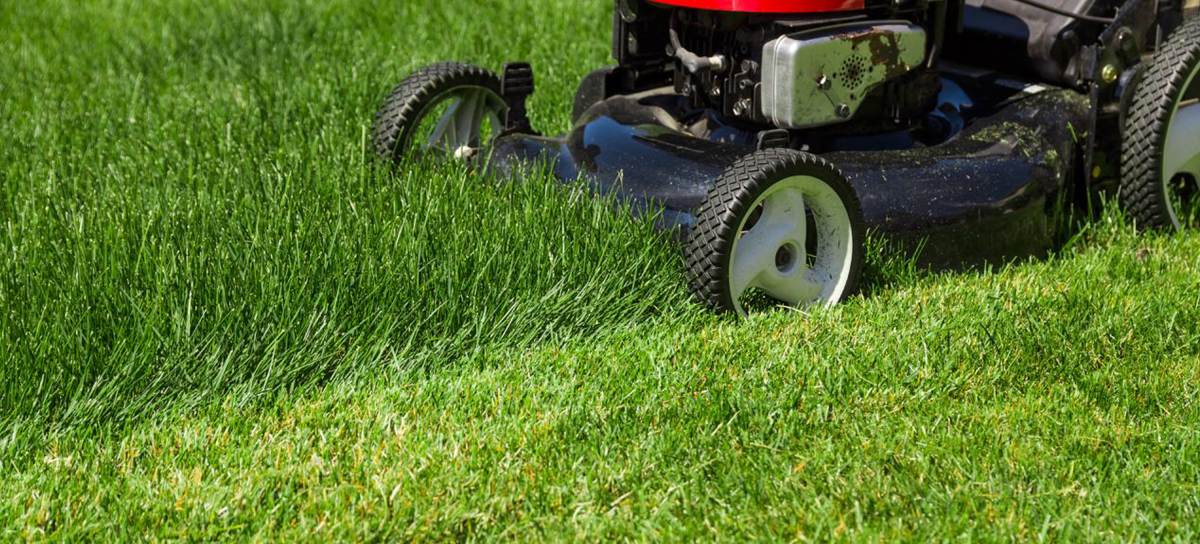
- When to mow?
With sown grass, the first mowing is crucial. Mowing should be done step by step. Do not let the grass get too long. On average lawns look good at about 3 to 4 centimetres. Only remove 30% of the growth at any one time and keep on top of this procedure regularly. Why do you have to do this? Grass is actually an oddity in nature. It grows from underneath, from the root. Just like hair. If you cut the tops, you stimulate growth on a hormonal level.
This rule also applies to seeded grass and turf: don’t mow when the grass is very wet underfoot and don’t mow when it is too dry. Long grass evaporates less quickly and thus retains moisture. And remember: never mow more than 1/3 of the length of the grass blades at once.
- Watering
With global warming, dry summers are the rule rather than the exception. The consequences are visible on your lawn. Yellow patches appear here and there. First reflex: to spray immediately. Wrong. It is best not to do anything at first. Those yellow tips are a natural defence mechanism of the grass. A kind of self-protection because it allows more energy to be directed towards the root. Grass will recover when it starts raining again. But what happens below ground is much more important. In case of prolonged drought, roots grow downwards and that is a positive thing. Suppose you would water superficially every day, then the roots would grow upwards. And this makes them more vulnerable and less resistant to drought. So, what you should do is water abundantly but less frequently so that the water penetrates deep into the soil.
Increase the chances of long-term success
You know: a thriving lawn is hard work. And when your job is done, the fate of the lawn is in the hands of your customer. And of course, you want him or her to be satisfied for a long time to come. With a soil conditioner from TerraCottem, you increase your chances of long-term success. Include it in your specifications at the outset. When you get a thumbs up from your client, you only need to work in TerraCottem through the loosened soil. The ideal depth is 20 cm, to encourage grass roots to grow deep.
All the benefits at a glance:
- Faster and better germination of the grass seeds
- Faster establishment of turf
- Stronger and deeper root development
- Increased water and nutrient retention
- Fewer watering sessions
- Higher resistance against drought stress and diseases
- Last but not least: a satisfied customer as grass will be greener on his side of the fence.
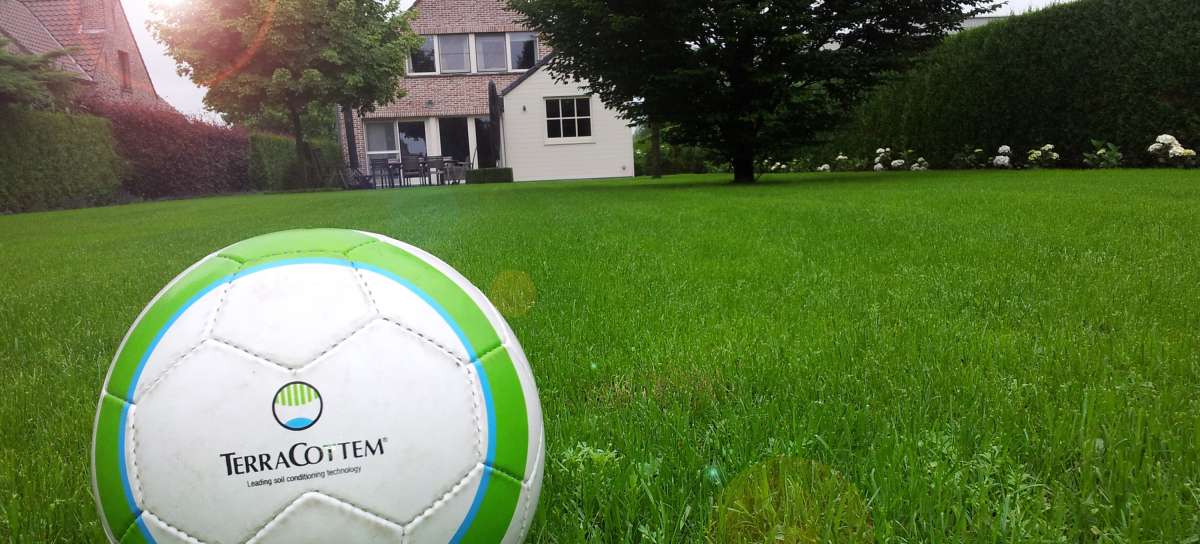
If you know someone who would also like to read this article, feel free to share:
TerraCottem is also used on professional sports pitches and helps keep sports grass in top condition.
Discover TerraCottem for your lawn here:
TerraCottem TurfDiscover TerraCottem for your lawn here:
TerraCottem TurfTerraCottem Intl. SL
Apartado de Correos 4511190 Benalup (Cádiz)Spain
